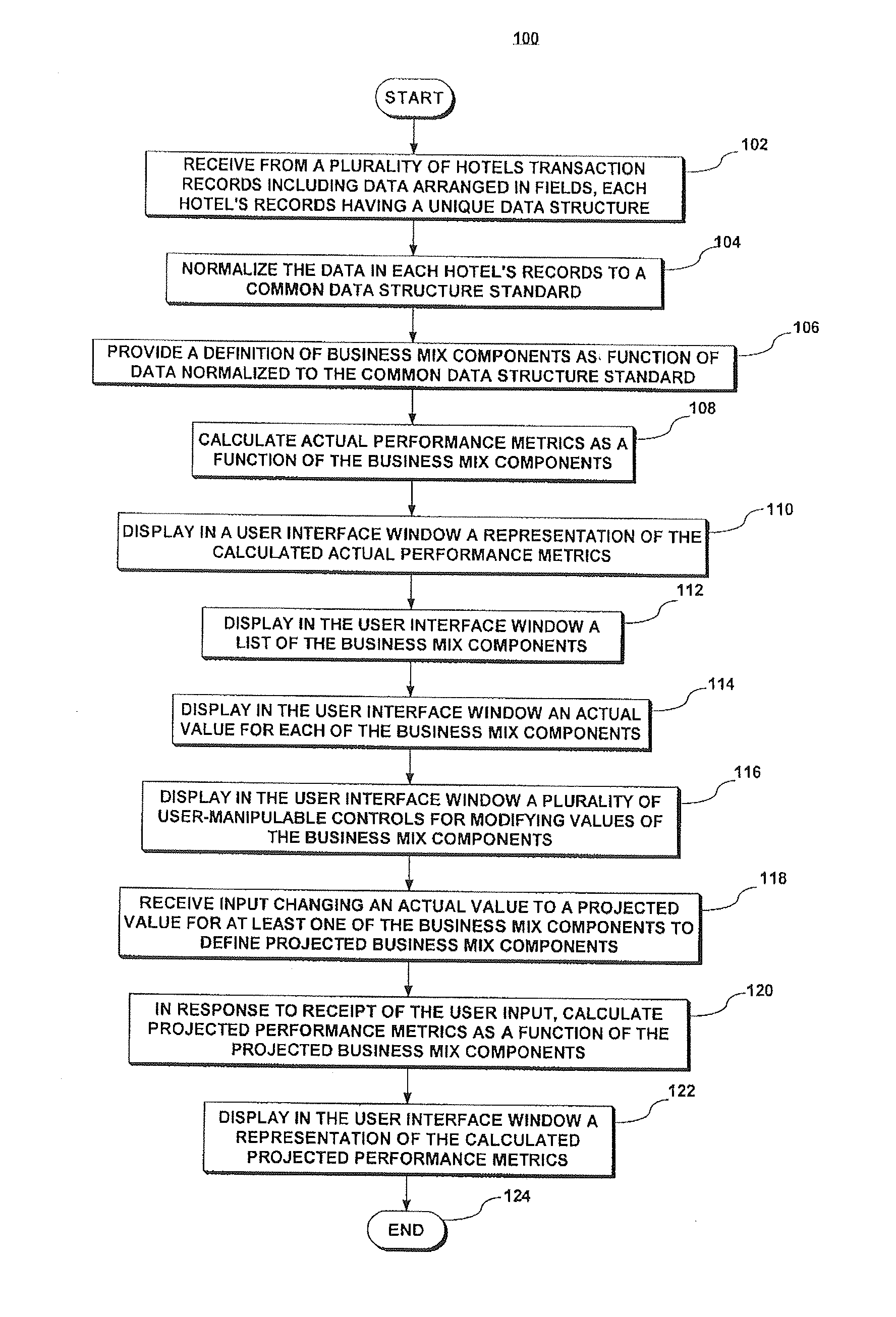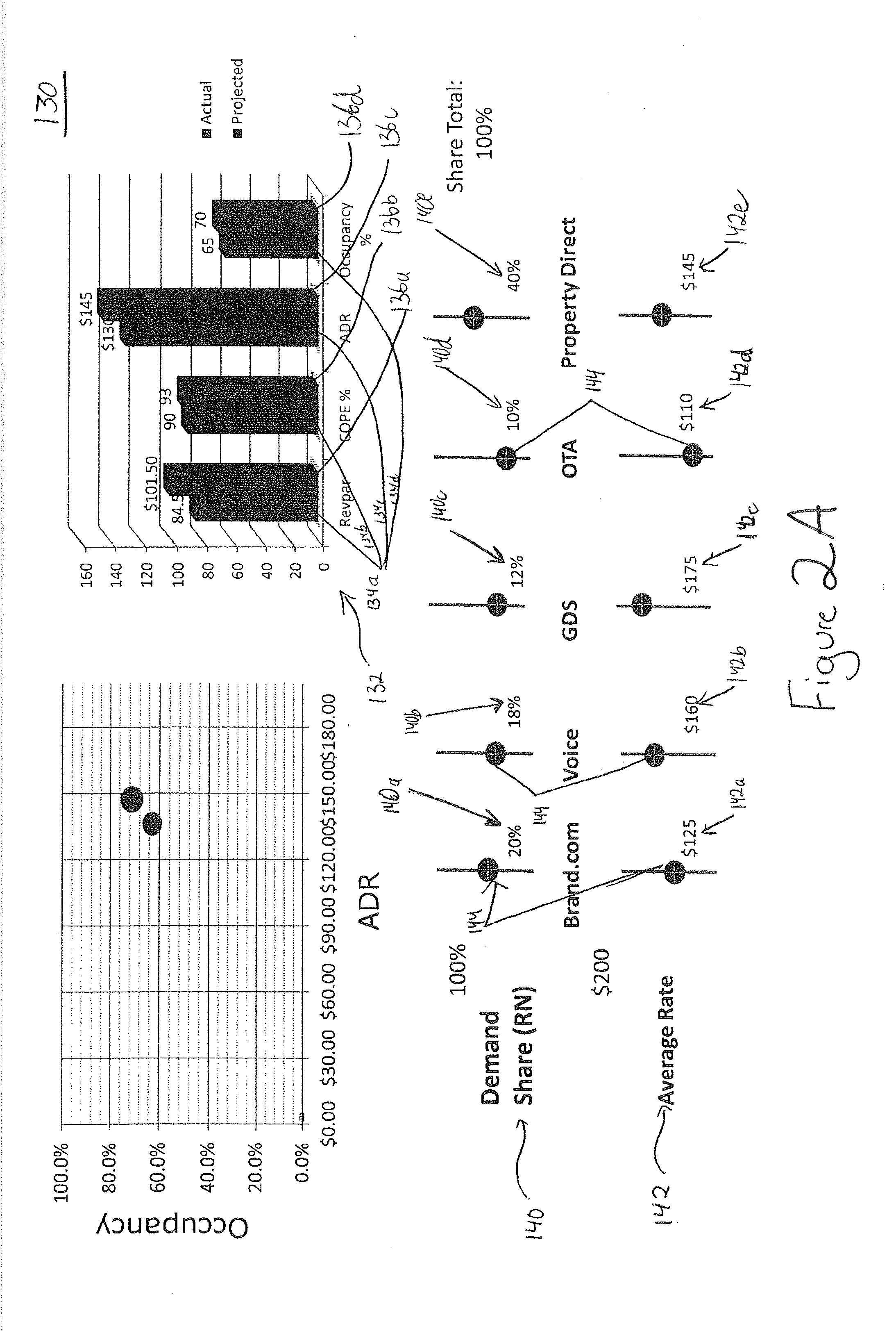System and method for analyzing hospitality industry data and providing analytical performance management tools
a technology for hospitality industry and data analysis, applied in the field of hospitality industry data analysis, can solve the problems of limited scope of data and analytics available to hotel management teams, asset managers and/or owners to evaluate the overall process of generating revenue, inconsistent tools for business evaluation and oversight of brand performance,
- Summary
- Abstract
- Description
- Claims
- Application Information
AI Technical Summary
Benefits of technology
Problems solved by technology
Method used
Image
Examples
Embodiment Construction
[0023]The present invention relates to a system and method for analyzing hospitality industry data that provides tools for improving and / or optimizing performance on a per-hotel and / or per-owner basis or across a range of hotels managed and / or owned by one company that may be representing multiple brands.
[0024]As discussed above, the inventive system enables evaluation of the hotel's total aggregate revenue performance (net RevPAR metric) and then breaks out the two primary ways that this revenue is acquired, namely: (1) using channel-specific cost levers, such as commissions, transaction fees, channel technology, booking incentives (as reflected in the COPE % metric); and (2) using non-channel specific cost levers, such as broadly spent sales and marketing funds like generalized media, sales payroll, public relations and social media (as reflected in the Sales & Marketing Efficiency metric). This process allows management to look at the macro view and then to take micro-snapshots t...
PUM
 Login to View More
Login to View More Abstract
Description
Claims
Application Information
 Login to View More
Login to View More - R&D
- Intellectual Property
- Life Sciences
- Materials
- Tech Scout
- Unparalleled Data Quality
- Higher Quality Content
- 60% Fewer Hallucinations
Browse by: Latest US Patents, China's latest patents, Technical Efficacy Thesaurus, Application Domain, Technology Topic, Popular Technical Reports.
© 2025 PatSnap. All rights reserved.Legal|Privacy policy|Modern Slavery Act Transparency Statement|Sitemap|About US| Contact US: help@patsnap.com



